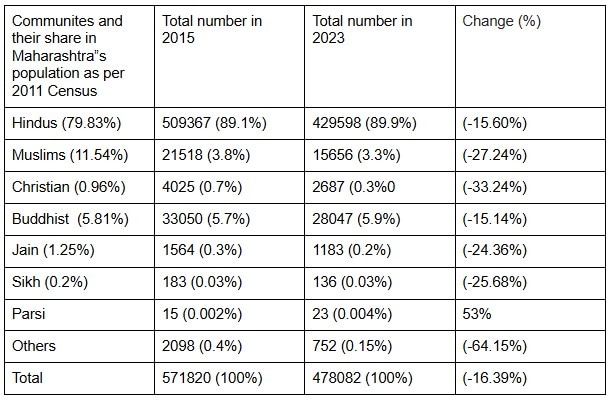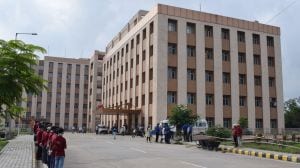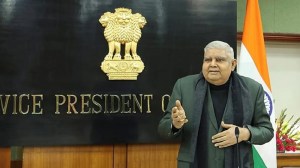Shrinking Representation: Fewer Christians, Muslims, Jains in Maharashtra Govt Workforce
Employee base fell from 5.71 lakh in 2015 to 4.78 lakh in 2023 as the state struggles with high wage costs
 Sources in the government say that as Maharashtra has high wage and pension costs, which consume nearly 35 per cent of its Rs 6.15 lakh crore budget, the state government has gradually reduced its workforce over the years. (Source: Pexels)
Sources in the government say that as Maharashtra has high wage and pension costs, which consume nearly 35 per cent of its Rs 6.15 lakh crore budget, the state government has gradually reduced its workforce over the years. (Source: Pexels)The Maharashtra government appears to be facing a “diversity deficit,” as the representation of various minority communities in state government positions has declined significantly over the last decade. While the share of reserved categories increased from 68.4 per cent to 71.1 per cent between 2015 and 2023 in line with the affirmative action policies, the share of three minority communities — Christian, Muslims and Jains– in government jobs declined in the same period from 4.74 per cent to 4.08 per cent.
According to data from the Maharashtra Government’s Directorate of Economics and Statistics, the state’s total employee strength has decreased by 16 percent, from 5.71 lakh in 2015 to 4.78 lakh in 2023, it represents a 34% shortfall over the total sanctioned workforce of 7.24 lakh employees. In terms of workforce distribution, while 570 positions are sanctioned per lakh of the population, only 377 employees are currently working per lakh of the population.
Sources in the government say that as the state has high wage and pension costs, which consume nearly 35 percent of its Rs 6.15 lakh crore budget, the state government has gradually reduced its workforce over the years.
How has the representation changed
While the overall workforce in the state government has declined, the proportion of vulnerable groups, including women and reserved categories such as Scheduled Tribes, Scheduled Castes, Nomadic Tribes, Special Backward Classes, and Other Backward Classes, has increased due to affirmative action policies in recruitment.
The percentage of women in government positions has risen from 18.32% in 2013 to 23.47% in 2023. In absolute numbers, the number of female employees has grown from 1.04 lakh to 1.12 lakh.
The proportion of employees from reserved categories has also increased from 68.4% to 71.1%. However, in absolute numbers, there has been a 13.3% decline, from 3.91 lakh to 3.39 lakh. This decrease, is slightly lower than the 16.39% drop in the state’s total workforce.
While the representation of women and reserved categories has improved, the same is not true for religious minorities as the share of representation of Christians, Muslims, and Jains in the state government have seen a significant reduction while the share of Hindus and Buddhists have seen an increase.
Hindus, who make up 79.83% of Maharashtra’s population according to the 2011 census, represent 89.9% of government employees, up from 89.1% in 2015. Buddhists, constituting 5.85% of the state’s population, have also seen a slight increase in government job representation, rising from 5.7% to 5.9%. However, the Christian community, which accounts for 0.96% of the population, has experienced the steepest decline, with their representation dropping from 0.7% to 0.3%. Muslims, who make up 11.54% of the state’s population, have seen a significant decrease, from 3.8% to 3.3% in government roles. Jains, who represent 1.25% of the population, have seen a drop from 0.3% to 0.2%, while Sikhs remain unchanged at 0.03%. The only community to show notable growth is the Parsis, whose numbers have surged by 53%, increasing from 15 to 23 employees.
 Declining Minority Representation in Maharashtra’s Government Workforce (2015-2023): Analysis of Population Share and Government Employment by Community
Declining Minority Representation in Maharashtra’s Government Workforce (2015-2023): Analysis of Population Share and Government Employment by Community
Serving officers in the state government highlight that the lack of diversity within government offices has become a growing concern, further intensified by the country’s current polarized socio-political climate. Each community appears to face unique challenges contributing to this underrepresentation in government roles.
“Historically, Jains have been less inclined to pursue government jobs, as seen in the numbers. However, there is now a focused effort to increase our participation in governance. The community has established several institutions dedicated to training members to successfully crack government exams and expand our presence in public sector jobs,” said Sandeep Bhandari, General Secretary of the All India Jain Minority Federation.
The Muslim community is also growing increasingly concerned about their gradual sidelining, citing structural and social challenges contributing to the dwindling numbers of Muslims in government roles.
“It’s true that there has been increasing marginalization, and Muslims face biases or prejudices when seeking employment. However, we have managed to overcome these challenges in the past. What we are seeing today is the failure of the community to culturally integrate into the regions where they live. For example, to work in the Maharashtra Government, a fundamental requirement is knowing Marathi. A significant number of Muslims either do not know the language or fail to see the need to learn it, which remains a major barrier to being hired,” explained a serving Muslim official in Mantralaya, who preferred to remain anonymous.
 Gender Representation Shift in Maharashtra’s Government Workforce (2015-2023)
Gender Representation Shift in Maharashtra’s Government Workforce (2015-2023)Increase in Female Employees Amid Overall Workforce Decline
Senior officials meanwhile claimed that the shortfall in the total staff was an attempt to streamline governance and cut burgeoning salary costs.
“During the joint session of the state legislature, the state governor outlined the government’s vision for the coming days and announced plans to hire 1.53 lakh individuals. Our recruitment process is transparent and ensures fairness for all candidates. While the underrepresentation of certain religious groups is concerning, we do not have an affirmative action or reservation policy based on religious grounds,” said a senior state government official.












